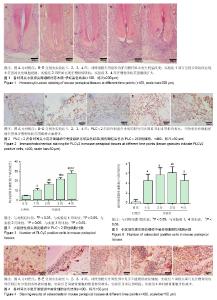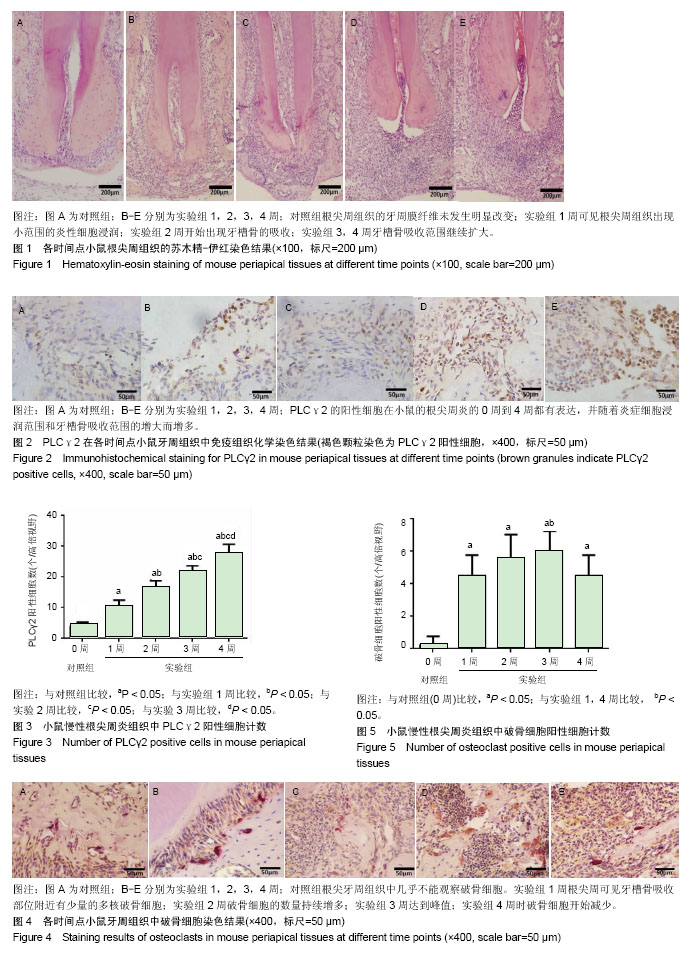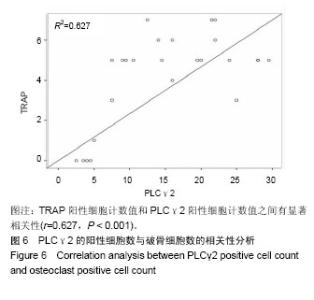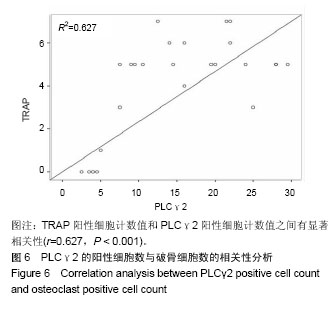| [1] 徐莉雅,马楠,仇丽鸿,等.慢性根尖炎中Wnt5a与骨吸收的关系[J].口腔医学研究,2016,32(2):172-176.[2] Kakehashi S,Stanley H,Fitzgerald R.The effect ofsurgical exposures of d-entalpulps in germ-free andconventional laboratory rats. Oral Surg Oral Med OralPathol.1965;20(3): 340-349.[3] Tanaka O,Kondo H.Localization of mRNAs for three novel members (beta 3, beta 4 and gamma 2) of phospholipase C family in mature rat brain.Neurosci Lett.1994;182: 17-20.[4] Stahl ML,Ferenz CR,Kelleher KL,et al.Sequence similarity of phospholipase C with the non-catalytic region of sr. Nature. 1988;332(6161):269-272.[5] Chang SH, Kanasaki K, Gocheva V,et al.VEGF-A induces angiogenesis by perturbing the cathepsin-cysteine protaease inhibitor balance in venules,causing basement membrane degradation and mother vessel formation. Cancer Res. 2009;69(10):4537-4544.[6] Nishizuka Y.Studies and perspectives of protein kinase C.Science.1986;233(4761):305-312.[7] Ju-Young Kim,Yoon-HeeCheon ,HyunMeeOh,et al.Oleanolic acid acetate inhibits osteoclast differentiation bydownregulating PLCγ2–Ca2+-NFATc1 signaling, and suppresses boneloss in mice.Bone.2014;60:104-111. [8] ishizuka Y.The molecular heterogeneity of protein kinase C and its implications for cellular regulation.Nature. 1988; 334:661-665.[9] Walsh MC,Kim N,Kadono Y,et al. Osteoimmunology: interplaybetween the immune system and bone metabolism.Annu Rev Immunol.2006;24:33-63.[10] Kim K,Kim JH,Lee J,et al.Nuclear factor ofactivated T cellsc1 induces osteoclast-associated receptor gene expression during tumor necrosisfactor-related activation-induced cytokine-mediated osteoclastogenesis. J BiolChem. 2005; 280:35209-35216.[11] Decker C,Hesker P,Zhang K,et al.The journal of biological chemistry.2013;288(47):33634-33641.[12] Beak JM,Kim JY,Lee CH,et al.International journal of molecular sciences. Int J Mol Sci.2017;18(3). pii: E581.[13] Xiao L, Zhu L, Yang S, et al. Different Correlation ofSphingosine-1-Phosphate Receptor 1 with ReceptorActivator of Nuclear Factor Kappa B Ligand andRegulatory T Cells in Rat Periapical Lesions. J Endod. 2015;41(4):479-486.[14] Kim JY,Park SH,Baek JM,et al.Harpagoside Inhibits RANKL-Induced Osteoclastogenesis via Syk-Btk-PLCγ2-Ca(2+) Signaling Pathway and Prevents Inflammation-Mediated Bone Loss.J Nat Prod. 2015;78(9): 2167-2174.[15] Yu P, Constien R, Dear N,et al.Autoimmunity and inflammation due to a gain-of-function mutation inphospholipase C gamma 2 that specifically increases external Ca2þ entry. Immunity.2005;22:451e465.[16] Bae YS, Lee HY, Jung YS, et al.Phospholipase Cg in Toll-like receptor-mediatedinflammation and innate immunity. Adv Biol Regul.2017;63:92-97. [17] Hashimoto A, Takeda K, Inaba M,et al.Essential Role ofPhospholipase C-g2 in B CellDevelopment and Function.J Immunol.2000; 165:1738-1742.[18] 曲文姝,钟林娜,董明,等.酪氨酸激酶Btk在根尖周炎中的表达研究[J].中国微生态学杂志,2017,29(1):50-53.[19] Yu P.Autoimmunity and inflammation due to a gain of function mutation in phospholipase C-gamma 2 that specifically increases external Ca2+ entry.Immunity.2005; (22):451-465.[20] Marton IJ, Kiss C .Characterization of inflammatory cellinfiltrate in dental periapical lesions. Int Endod J. 1993; 26(2):131-136. |



